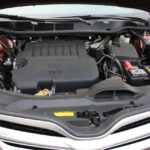Starting your car only to be met with silence is a frustrating experience familiar to many drivers. A dead battery can derail your plans and leave you stranded. This is where a Jump Starter becomes an indispensable tool. But what exactly is a jump starter, and how do you choose the right one? This guide will delve into the essential aspects of jump starters, focusing on key metrics like cranking amps and peak amps to help you make an informed decision and ensure you’re never left powerless.
Jump starters are portable devices designed to deliver a burst of power to a dead car battery, enabling you to start your vehicle without needing another car or calling for roadside assistance. They are essentially self-contained power sources, offering a convenient and quick solution to a common car problem. Understanding the power ratings of these devices is crucial for effective use.
When evaluating a jump starter, you’ll encounter terms like “peak amps” and “cranking amps.” While both relate to power, they represent different aspects of a jump starter’s capability. Peak amps indicate the maximum instantaneous current a jump starter can deliver. This is a high surge of power available for a very short duration, often used in marketing materials to highlight the jump starter’s power. However, peak amps can be misleading when determining a jump starter’s real-world starting ability.
Cranking amps, on the other hand, provide a more practical measure of a jump starter’s performance. Cranking amps represent the sustained current a jump starter can deliver for several seconds, which is the power needed to actually crank the engine and start your car. This rating considers the entire system of the jump starter, including the battery and power delivery system, providing a more accurate indication of its starting capability. Therefore, when choosing a jump starter, focusing on the cranking amps rating is generally more beneficial.
Several factors influence the amount of cranking amps required to start a vehicle. Smaller vehicles with smaller engines naturally require less cranking power compared to larger vehicles, such as trucks or SUVs, which have larger engines demanding more initial torque to turn over. The condition of your vehicle also plays a significant role. An older car or one that hasn’t been properly maintained may require more cranking amps due to increased engine resistance or electrical system inefficiencies.
Environmental conditions, particularly cold weather, significantly impact battery performance. Cold temperatures reduce the chemical activity within a car battery, making it harder to produce sufficient current. Consequently, starting a vehicle in cold weather demands more cranking amps. Lastly, the extent to which your battery is discharged affects the required jump start power. A deeply discharged battery will necessitate more cranking amps to bring it back to life compared to a battery with a partial discharge.
Jump starters utilize different battery technologies, primarily lead-acid and lithium-ion. Lead-acid jump starters are often more budget-friendly and perform reliably in cold temperatures. They are a robust and proven technology, but they tend to be heavier and bulkier due to their lower energy density. Lead-acid batteries also charge slower and typically require more maintenance over their lifespan.
Lithium-ion jump starters, while generally more expensive upfront, offer several advantages. They are significantly more energy-dense, meaning they can store more power for their size and weight. This results in lighter and more compact jump starters, making them easier to store and transport. Lithium-ion batteries also boast a longer lifespan, faster charging times, and require minimal maintenance compared to their lead-acid counterparts. The higher power density often translates to higher cranking amp ratings in a smaller package.
When selecting a jump starter, prioritize the cranking amps rating. Ensure that the jump starter’s cranking amp rating exceeds your vehicle’s battery’s cold cranking amps (CCA) rating. The CCA rating, usually found on your car battery’s label, indicates the current your battery can deliver at 0°F (-18°C). Choosing a jump starter with a higher cranking amp rating than your battery’s CCA provides a safety margin, ensuring sufficient power even in cold conditions or when dealing with a deeply discharged battery. For instance, if your battery has a 420 CCA rating, a jump starter with a 500A cranking amp rating would be a suitable choice.
Maintaining your jump starter is vital for its longevity and reliable performance. Regularly inspect the jump starter’s battery charge status, ideally every 30 days. Recharge the jump starter when its battery level drops below 50% to ensure it’s ready for use when needed. Some jump starters, especially newer models, come with built-in reminders, such as visual displays or audible alerts, to prompt recharging.
Pay attention to your jump starter’s battery health. If the battery charges to full capacity very quickly, fails to reach full charge, or loses charge rapidly after disconnecting the charger, it may indicate a failing internal battery. In such cases, consult the owner’s manual for guidance on servicing or replacing the battery or the entire unit. To maximize battery life, fully charge the jump starter before storing it and store it in a cool environment. Avoid charging the jump starter when it’s cold, as this can negatively impact charging efficiency and battery health. Lead-acid batteries in jump starters typically have a lifespan of 3 to 5 years, and exposure to extreme heat can shorten this lifespan.
While jump starters offer standalone jump-starting capability, booster cables (or jumper cables) provide an alternative. Booster cables require a host vehicle with a charged battery to jump-start your car. Booster cables are generally less expensive than jump starters, but they rely on the availability of a second vehicle. Choose booster cables if you anticipate having access to a donor vehicle. Opt for a jump starter if you prefer an independent solution and want the convenience of starting your car without external assistance. Jump starters, although typically pricier, incorporate their own power source and often include additional features like work lights or USB charging ports, adding to their value and versatility.
It’s also important to differentiate jump starters from battery chargers and battery maintainers. Battery chargers are designed to recharge a dead battery over a longer period, while battery maintainers are used to keep batteries at their optimal charge level during storage, preventing self-discharge. Jump starters are specifically for delivering a quick burst of power for starting a car, not for long-term charging or maintenance.
Finally, understanding the difference between a dead battery and a bad battery can help you diagnose the issue correctly. A dead battery is simply discharged and can often be revived with a jump start or battery charger. A bad battery, however, is internally damaged and unable to hold a charge or function properly, even after charging. Signs of a bad battery include rapid voltage drop, inability to reach full charge, or fluctuating voltage during charging. While a jump starter can help with a dead battery, a bad battery will ultimately require replacement.
In conclusion, a jump starter is a valuable tool for any car owner, providing peace of mind and a solution to dead battery emergencies. By understanding cranking amps, peak amps, battery types, and proper maintenance, you can select the right jump starter for your needs and ensure you’re prepared for unexpected battery failures. Choose wisely, maintain it well, and a jump starter can be your reliable roadside companion.

